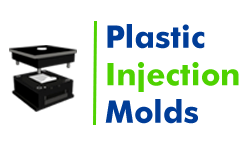- Mould Manufacturer
- Tooling
- Moulding Die
- Plastic Molding
- Plastic Injection Molding
- Injection Molding
- Nylon Injection Molding
- Injection Moulding
- Custom Injection Molding
- Injection Mould
- Injection Mouldings Process Manufacturers
- Medical Injection Molding
- Polycarbonate Injection Moulding
- Rapid Injection Moulding
- Injection Molds
- Injection Molding Cost
- Injection Molding Suppliers
- Injection Moldings
- HDPE Molding
- Metal Injection Molding
- Rubber Injection Molding
- Mold Designing
- Prototyping
- Automotive Injection Molding
- Blow Molding
- 3D Printing
Lithography 3D Printing: Vastly Popular Option
When it comes to printing highly accurate and isotropic prototypes on a wide range of materials with the best features and smooth finish on the surface, lithography 3D printing is fast becoming an excellent option of professionals. The advancements in 3D printing have changed the way in which businesses deal with production and prototyping. Stereolithography 3D printing has also undergone significant changes in terms of price points and versatility.
Three d printing and stainless steel:
Additive manufacturing provides freedom in design and can create hollow spaces or complex internal structures at one shot without using additional tools. With stereolithography 3D printing, clear and transparent objects can be produced with ease. Moreover, the prototypes are suitable for assessing the internal issues. Here is what to know about lithography three d printing:
- Achieving high level of precision in finer details and the thinness of each layer applied in lithography, the prototypes you obtain come with realistic finish and the finest geometrical shapes.
- Quick implementation of prototypes in the initial stages of product development.
- The single-stage method of production results in the creation of smooth surfaces without finish.
- Stereolithography leads to the production of flexible and rigid 3D objects.
- You can get customized colors and multi-part assemblies.
- The production cost can be reduced in stereolithography
- It can create small parts with high definition and larger parts that are precise.
- The functional surface quality is good even though the substitution of materials is evident.
The best reasons to choose stereolithography three dimensional printing is that the part can be obtained in about two days as the 3D files themselves are adequate to launch the printing.
3D printing stainless steel: why choose this option
If you are looking forward to 3D print using metal and wondering which metal to choose, stainless steel could be the best fit. The potential of stainless steel is very high when it comes to additive manufacturing. There could be several reasons to use stainless steel. Here is what you need to know:
- Stainless steel offers low-cost metal printing suitable for large objects due to its high physical strength.
- With 3D printing stainless steel, you can get complex designs.
- Stainless steel is not only high in tensile strength but also resists heat and corrosion.
- It is known for its ductile properties, making it a good choice for different industry verticals.
- Stainless steel offers you the opportunity to make the technical parts highly accurate.
- The material is also suitable for detailed 3D printing and design in industries where it is needed the most.
Metal 3D printing is one of the best techniques to produce functional parts, and using stainless steel is an excellent decision to obtain durable and lightweight metal products. So, if you are looking for reputed services offering 3D printing near me, consult with us to get the best outcome for your needs.
3D printing automotive: transforming the industry
For several decades, 3D printing is extensively used in the automotive industry to create prototypes. The printing solutions in the automotive industry provide several benefits to be evaluated in terms of performance and features. The technology can displace the CNC production with long lead times.
The 3D printers allow the designers to try various options with the same detail and iterations during the stages of the development of new models. Therefore, the auto makers may stay up-to-date with the market needs and stay ahead in this field. Call us today for 3D printing automotive and get the best results.
FAQ
- Q1. What Is The Resolution Of Stereolithography?
Stereolithography (SLA) typically offers a resolution of around 25 to 100 microns (0.001 to 0.004 inches). This means it can create highly detailed parts with smooth surfaces. Resolution refers to the smallest feature size or level of detail that can be accurately reproduced by the SLA printing process.
- Q2. What Is The Process Of 3D Lithography?
3D lithography, or lithographic 3D printing, uses light to cure layers of liquid resin into a solid object. A light source projects a pattern onto the resin, solidifying it layer by layer. This process repeats until the entire object is formed. It's used for creating detailed and precise 3D models.
- Q3. How Thick Is A Stereolithography Layer?
In stereolithography, each layer typically ranges from 0.025 to 0.1 millimeters thick, depending on the machine and settings used. Thinner layers result in finer details but take longer to build. Thicker layers speed up printing but may sacrifice surface smoothness. Adjustments are made based on specific project requirements and desired outcomes.







.webp)

